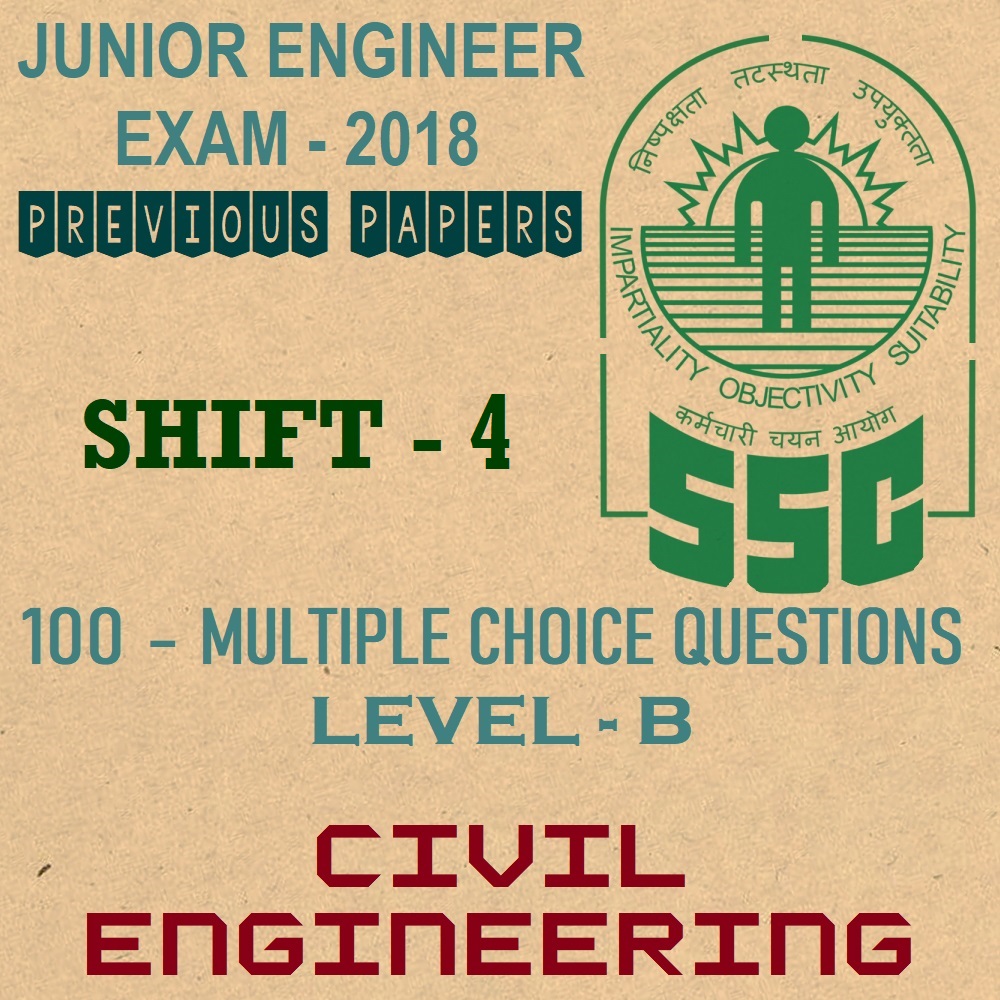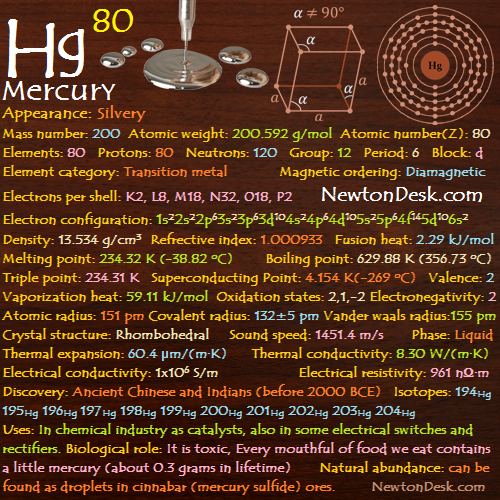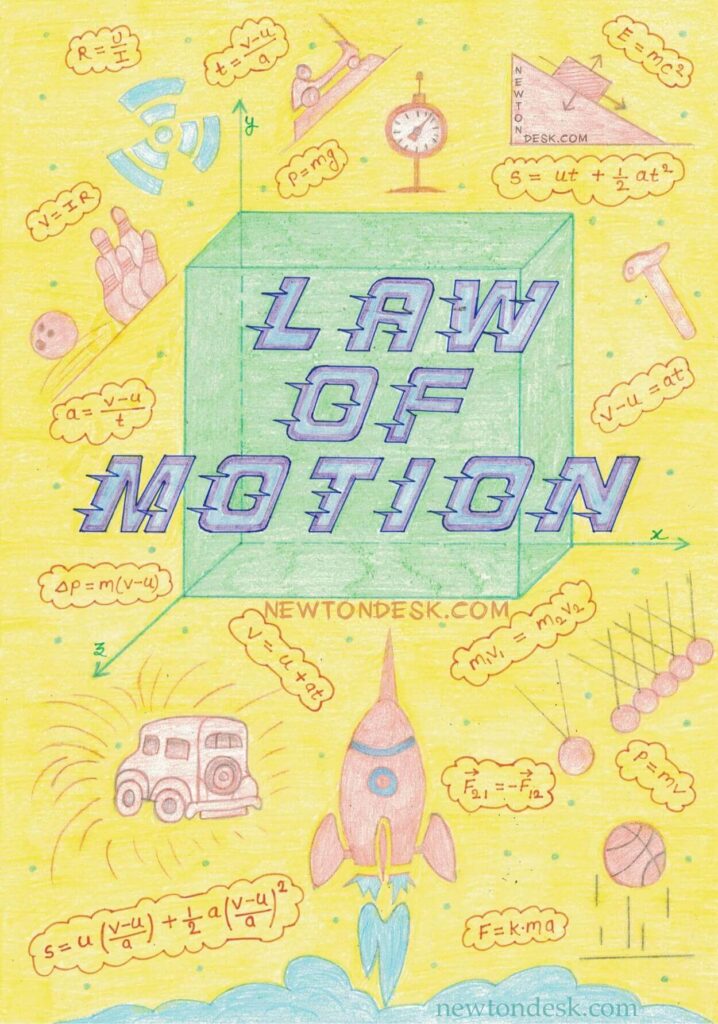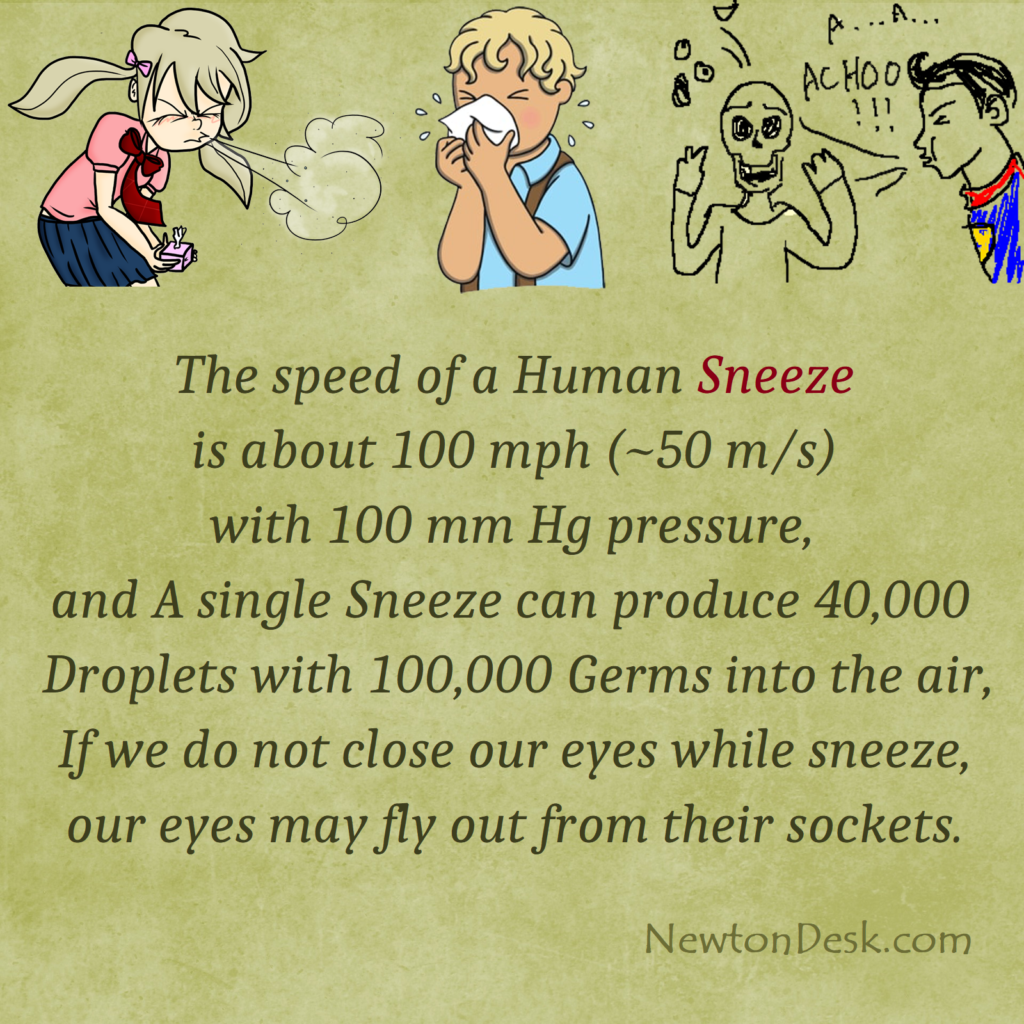SSC Junior Engineer Exam Paper – 2018 “held on 23 January 2018” Evening Shift (Civil Engineering)
Q 1: Which of the following quality of timber can be improved using Abel’s process ?
Options:
1) Durability
2) Fire resistance
3) Chemical resistance
4) Strength
Answer: Fire resistance
Q 2: Which of the following shows the CORRECT decreasing order of rate of hydration of Portland cement compounds ?
Options:
1) C3A > C4AF > C3S > C2S
2) C3A > C4AF > C2S > C3S
3) C3A > C3S > C2S > C4AF
4) C4AF > C3S > C3A > C2S
Answer: C3A > C4AF > C3S > C2S
Q 3: The proportions of ingredients in concrete mix are given by 1:2:4, What will be the actual quantity of the sand per unit volume of cement, if it undergoes 20% of bulking ?
Options:
1) 1.5
2) 2.4
3) 4.6
4) 6.5
Answer: 2.4
Q 4: What is the range of slump (mm) of the concrete which is used as the mass concrete ?
Options:
1) 10 to 15
2) 20 to 50
3) 50 to 75
4) 75 to 110
Answer: 20 to 50
Q 5: In the symbol used to represent the concrete mix, MX. M stands for mix and numeric X represents the______.
Options:
1) 7 days compressive strength
2) 14 days compressive strength
3) 28 days compressive strength
4) 28 days tensile strength
Answer: 28 days compressive strength
Q 6: According to the IS code, at what moisture content, weight of the timber is noted ?
Options:
1) 0.05
2) 0.12
3) 0.23
4) 0.3
Answer: 0.12
Q 7: What is the recommended moisture content of timber, which is used as a structural element for windows ?
Options:
1) 5-10%
2) 10-16%
3) 16-26%
4) 26-36%
Answer: 10-16%
Q 8: Which of the following represents the smallest size (mm) of fine aggregate (sand)?
Options:
1) 0.01
2) 0.06
3) 1.5
4) 2
Answer: 0.06
Q 9: What is the percentage content of silica in a good quality brick earth ?
Options:
1) 20-30%
2) 30-40%
3) 40-50%
4) 50-60%
Answer: 50-60%
Q 10: When timber is burnt in the wood fire over a depth of about 15 mm, the process of treatment is known as______.
Options:
1) Charring
2) Rueping process
3) Bethel process
4) Boucherie process
Answer: Charring
Q 11: The plasticity index and plastic limit of a soil is given by 25% and 20% respectively. What will be the liquid limit of the soil ?
Options:
1) 0.15
2) 0.25
3) 0.35
4) 0.45
Answer: 0.45
Q 12: In the flow over length of 50 m, the head loss of 6 m occurred due to seepage. The hydraulic gradient is given by ______.
Options:
1) 0.01
2) 0.12
3) 0.29
4) 0.32
Answer: 0.12
Q 13: Which of the following expression represents the CORRECT value of coefficient of curvature ?
Options:
1) Cc = (D30)2 / (D60 x D10)
2) Cc = (D60)2 / (D30 x D10)
3) Cc = (D10)2 / (D60 x D30)
4) Cc = D30 / (D60 x D10)
Answer: Cc = (D30)2 / (D60 x D10)
Q 14: Which of the following apparatus is used to measure the liquid limit soil ?
Options:
1) Casagrande apparatus
2) Pycnometer
3) Ring and ball apparatus
4) None of these
Answer: Casagrande apparatus
Q 15: The compressibility of the fluid is given as 5×10-11 Pa-1 What is the Bulk modulus (Gpa) of fluid ?
Options:
1) 10
2) 15
3) 20
4) 25
Answer: 20
Q 16: Which of the following is measured with the help of an orifice meter ?
Options:
1) Discharge
2) Discharge coefficient
3) Head of water
4) Pressure coefficient
Answer: Discharge
Q 17: Which of the following represents the CORRECT range of coefficient of discharge of venturimeter ?
Options:
1) 0.32 to 0.43
2) 0.45 to 0.52
3) 0.54 to 0.75
4) 0.96 to 0.98
Answer: 0.96 to 0.98
Q 18: A cube of dimension 2 m is floating in the water with immerging depth of 1 m. What is the weight (KN) of the cube ? (Consider unit weight of water as 10 kN/m3)
Options:
1) 10
2) 20
3) 30
4) 40
Answer: 40
Q 19: The Reynold number for the flow through smooth pipe is given by 105. The value of friction factor for smooth pipe is________.
Options:
1) 0.001
2) 0.018
3) 0.089
4) 0.125
Answer: 0.018
Q 20: At a particular point in the channel, the specific energy and velocity of flow is given by 1.5 m-kg/kg and 2.5 m/s respectively . What is the depth of flow in channel at that point ?
Options:
1) 0.5
2) 1.18
3) 2.32
4) 2.5
Answer: 1.18
Q 21: A circular pipe of diameter 60 cm carries a discharge of 2.5 m3/s. What is the velocity of flow (m/s) through the pipe ?
Options:
1) 2.5
2) 5.67
3) 8.83
4) 12.32
Answer: 8.83
Q 22: Which of the following represents the CORRECT relationship between the Chezy’s coefficient, C and coefficient of roughness of channel, f ?
Options:
1) C ∝ 1/√f
2) C ∝ √f
3) C ∝ 1 / f3/2
4) C ∝ 1/f
Answer: C ∝ 1/√f
Q 23: Which of the following is calculated with the help of Moody equation ?
Options:
1) Discharge
2) Friction factor
3) Pressure
4) Velocity of flow
Answer: Friction factor
Q 24: Which of the following is responsible for the separation of boundary layer ?
Options:
1) Positive pressure gradient
2) High viscosity of fluid
3) Low viscosity of fluid
4) None of these
Answer: Positive pressure gradient
Q 25: The settling tank of surface over flow rate of 4.5×10-4 m3/m2/s is used for design discharge of 2 m3/s. What is the surface area (m2) of the settling tank ?
Options:
1) 1000
2) 2000
3) 3000
4) 4000
Answer: 4000
SSC Junior Engineer All Previous Papers
Q 26: The rain is called as acid rain, when its pH is less than______.
Options:
1) 3
2) 4.5
3) 7
4) 8.5
Answer: 4.5
Q 27: Using prismoidal method, what is the volume (cubic metre) of reathwork required for 10 m deep pit, if the top and bottom dimensions are 4 m x 8 m and 8 m x 16 m respectively ?
Options:
1) 678.34
2) 746.67
3) 800
4) 1493.33
Answer: 746.67
Q 28: For supply, lime is measured in_____.
Options:
1) Bags of 50 kg
2) Cubic metre
3) Kilograms
4) Quintals
Answer: Quintals
Q 29: What is the estimate (Rs.) for a building with a plinth area of 2000 sq. m with rate of 3800 per sq. m ? (Consider the acids of 15% of electric installation and 7% of miscellaneous)
Options:
1) 150000
2) 450080
3) 2423000
4) 9272000
Answer: 9272000
Q 30: What is the quality (sq. m) of plastering required for the 6 m length of wall which is 4 m high and 50 cm thick ?
Options:
1) 12
2) 24
3) 48
4) 56
Answer: 48
Q 31: The length, width and height of a wall are given as 800 cm, and 50 cm respectively. What will be the total cost (Rs.) of brickwork, if the rate of brickwork is Rs. 320 per cubic metre ?
Options:
1) 4000
2) 6400
3) 10500
4) 12860
Answer: 6400
Q 32: The plinth area rate and plinth area of a building is Rs 5500 per sq.m and 150 sq.m respectively. What is the total cost (Rs) of building considering cost of electrification as 7%, cost of sanitary fittings as 165 cost of roads and awns as 6.5% and cost of contingencies as 4.5%.
Options:
1) 50000
2) 825000
3) 982860
4) 1105500
Answer: 1105500
Q 33: Which of the following item is NOT a lump sum item ?
Options:
1) Architectural features
2) Contingencies and unforesees items
3) Electric installation
4) Plastering of wall
Answer: Plastering of wall
Q 34: What is the total cost (Rs.) according to approximate estimate of hostel building with capacity of 75 beds ? The altogether cost per bed is given as Rs. 20,000.
Options:
1) 500,000
2) 850,000
3) 1,500,000
4) 5,500,000
Answer: 1,500,000
Q 35: What is the volume of earthwork (cubic metre) in embankment of 10 m long and 7m wide with the side slope of 2.1 ?
Options:
1) 70
2) 150
3) 280
4) 390
Answer: 390
Q 36: Which of the following method is used to prepare the approximate estimate ?
Options:
1) Cubical contents method
2) Plinth area method
3) Unit base method
4) All option are correct
Answer: All option are correct
Q 37: In which of the following condition two contour lines intersect each other ?
Options:
1) Hills
2) Overhanging cliff
3) Steep slope
4) Uniform slope
Answer: Overhanging cliff
Q 38: In which of the following scale of the map is not affected due to shrinking of map ?
Options:
1) Engineer’s scale
2) Graphical scale
3) Representative fraction
4) None of these
Answer: Graphical scale
Q 39: A surveyor measures a distance between two points on a map of representative fraction of 1:100 is 60 m. But later he found that he used wrong representative fraction of 1:50. What is the correct distance between the two points ?
Options:
1) 30
2) 45
3) 90
4) 120
Answer: 120
Q 40: Which one of the following is the CORRECT statement for a station that is affected by local attraction ?
Options:
1) Difference between the fore bearing and back bearing is always equal to 90 Degrees.
2) Difference between the fore bearing and back bearing is always equal to 180 Degrees.
3) Difference between the fore bearing and back bearing is not equal to 180 Degrees.
4) Difference between the fore bearing and back bearing is always equal to 360 Degrees.
Answer: Difference between the fore bearing and back bearing is not equal to 180 Degrees.
Q 41: Which of the following error is most likely to occur in the plane table surveying ?
Options:
1) Error in sighting
2) Error in orientation
3) Error in leveling
4) Error in measurement
Answer: Error in orientation
Q 42: Which of the following is the expression for the additive constant, if f is the focal length of objective and i is the stadia interval ?
Options:
1) f – i
2) f / i
3) f + d
4) f x i
Answer: f + d
Q 43: The staff reading taken on a staff held at a distance of 50 m from the instrument with the bubble central is 1.465 m. When the bubble is moved 4 divisions out of the centre, the staff reading is 1.472 m. What will be the radius of curvature (m) of the bubble tube, if the length of one division is 2 mm ?
Options:
1) 30
2) 43.7
3) 57.14
4) 66.34
Answer: 57.14
Q 44: Which of the following is the CORRECT ratio of refraction correction to curvature correction ?
Options:
1) 1/4
2) 1/6
3) 1/7
4) 1/9
Answer: 1/7
Q 45: Which of the following Instrument is used for centering the theodolite in windy conditions ?
Options:
1) Cross staff
2) Optical plummet
3) Optical square
4) Spirit level
Answer: Optical plummet
Q 46: Which of the following test is used to make the line of sight perpendicular to the horizontal axis ?
Options:
1) Azimuth test
2) Cross hair ring test
3) Spire test
4) Vertical arc test
Answer: Azimuth test
Q 47: Which of the following statement is TRUE for the linear reservoir ?
Options:
1) Storage is proportional to inflow discharge.
2) Storage is proportional to outflow discharge.
3) Storage is proportional to square of inflow discharge.
4) Storage is proportional to square of outflow discharge.
Answer: Storage is proportional to outflow discharge.
Q 48: A 45 cm diameter well penetrates aquifer of 30 m thick. Under the steady pumping rate for a long time, the drawdown’s at two observation wells 10 m and 20 m from the pumping well are 5 m and 3.5 m respectively. What will be the discharge (cubic metre), if the permeability of the aquifer is given as 20 m/day ?
Options:
1) 0.05
2) 0.067
3) 0.08
4) 1.12
Answer: 0.08
Q 49: What will be the cant deficiency (cm), if maximum safe speed on a 5 Degree curve of a broad gauge track is 110 km/h and average speed of train is 85 km/h ?
Options:
1) 0.011
2) 0.78
3) 0.89
4) 18.7
Answer: 10
Q 50: What will be the shift of transition curve, if the length of transition curve is 80 m and radius of the curve is 300 m ?
Options:
1) 0.011
2) 0.78
3) 0.89
4) 21.33
Answer: 0.89
SSC Junior Engineer All Previous Papers
Q 51: Design of a riveted joint, is based on the assumption.
Options:
1) Load is uniformly distributed among all the rivets
2) Shear stress on a rivet is uniformly distributed over its gross area.
3) Bearing stress is uniform between the contact surfaces of the plate and the rivet.
4) All option are correct
Answer: All option are correct
Q 52: Effective length of a column effectively held in position and restrained in directions at both ends is
Options:
1) L
2) 0.67 L
3) 0.85 L
4) 1.5 L
Answer: 0.67 L
Q 53: The slenderness ratio of a column is zero when its length
Options:
1) Is zero
2) Is equal to its radius of gyration
3) Is supported on all sides throughout its length
4) None of these
Answer: Is supported on all sides throughout its length
Q 54: Outstanding length of a compression member consisting of a channel is measured as
Options:
1) Half of the nominal width
2) Nominal width of the section
3) From the edge to the first row of rivets
4) None of these
Answer: Nominal width of the section
Q 55: The equivalent axial load may be defined as the load which produces a stress equal to
Options:
1) Maximum stress produced by the eccentric load
2) Maximum stressed fiber
3) Bending stress
4) None of these
Answer: Maximum stress produced by the eccentric load
Q 56: For the economical design of a combined footing to support two equal column loads the projections of beams in lower tier are kept such that bending moment under column is equal to
Options:
1) Bending moment at the center of the beam
2) Half the bending moment at the center of the beam
3) Twice the bending moment at the center of the beam
4) None of these
Answer: Bending moment at the center of the beam
Q 57: A beam is defined as a structural member subjected to
Options:
1) Axial loading
2) Axial and transverse loading
3) Transverse loading
4) None of these
Answer: Transverse loading
Q 58: The gross section of the web of a beam is defined as
Options:
1) Depth of the beam multiplied by its web thickness
2) Width of the flange multiplied by its web thickness
3) Sum of the flange width and depth of the beam multiplied by the web thickness
4) None of these
Answer: Depth of the beam multiplied by its web thickness
Q 59: The effective length L of a simply supported beam with ends restrained against torsion and also the ends of compression flange partially restrained against lateral bending is given by
Options:
1) L = span
2) L = 0.85 span
3) L = 0.75 span
4) L = 0.7 span
Answer: L = 0.85 span
Q 60: The connection of one beam to another beam by means of an angle at the bottom and an angle at the top, is known as
Options:
1) Unstiffened seated connection
2) Stiffened seated connection
3) Seated connection
4) None of these
Answer: Seated connection
Q 61: Separation of water or water sand cement from a freshly mixed concrete is known
Options:
1) Bleeding
2) Creeping
3) Segregation
4) Flooding
Answer: Bleeding
Q 62: For road pavements, the cement generally used is
Options:
1) Ordinary Portland cement
2) Rapid hardening cement
3) Low heat cement
4) Blast furnace slag cement
Answer: Rapid hardening cement
Q 63: Hydration of cement is due to chemical action of water with
Options:
1) Tricalcium silicate and dicalcium silicate
2) Dicalcium silicate and tricalcium aluminate
3) Tricalcium aluminate and tricalcium alumin ferrite
4) All option are correct
Answer: All option are correct
Q 64: Internal friction between the ingredients of concrete, is decreased by using
Options:
1) Less water
2) Fine aggregates
3) Rich mix
4) More water and coarse aggregates
Answer: More water and coarse aggregates
Q 65: In a slump test, each layer of concrete is compacted by a steel rod 60 cm long and of 16 mm diameter for
Options:
1) 20 times
2) 25 times
3) 30 times
4) 40 times
Answer: 25 times
Q 66: To prevent segregation, the maximum height of placing concrete is
Options:
1) 100 cm
2) 125 cm
3) 150 cm
4) 200 cm
Answer: 100 cm
Q 67: The shuttering of a hall measuring 4 m x 5 m, can be removed after
Options:
1) 5 days
2) 7 days
3) 10 days
4) 14 days
Answer: 7 days
Q 68: For compacting plain concrete road surface of thickness less than 20 cm, we use
Options:
1) Internal vibrator
2) Screed vibrator
3) form vibrator
4) None of these
Answer: Screed vibrator
Q 69: Pick up the correct statement from the following
Options:
1) Construction joints in columns are provided a few cm below the junction of beam
2) Construction Joints in columns are provided at the bottom haunching
3) Construction joint in beams and slabs are provided within middle third
4) All option are correct
Answer: All option are correct
Q 70: An excess of flaky particles in concrete aggregates
Options:
1) Decreases the workability
2) Increases the quantity of water and sand
3) Affects the durability of concrete
4) All option are correct
Answer: All option are correct
Q 71: For the construction of cement concrete dams, the maximum permissible size of the aggregates is
Options:
1) Greatest surface area for the given cement and aggregates
2) Least surface area for the given cement and aggregates
3) Least weight for the given cement and aggregates
4) None of these
Answer: Greatest surface area for the given cement and aggregates
Q 72: For given workability the grade requiring the least amount of water is one that gives
Options:
1) Greatest surface area for the given cement and aggregates
2) Least surface area for the given cement and aggregates
3) Least weight for the given cement and aggregates
4) None of these
Answer: Greatest surface area for the given cement and aggregates
Q 73: The type of aggregates same nominal size, which contains less voids when compacted are
Options:
1) Rounded spherical
2) Irregular
3) Flaky
4) None of these
Answer: Rounded spherical
Q 74: For quality control of Portland cement the test essentially done is
Options:
1) Setting time
2) Soundness
3) Tensile strength
4) All option are correct
Answer: All option are correct
Q 75: Pick up the correct statement from the following
Options:
1) The percentage of voids in the aggregate after proper compaction is called the angularity number
2) Angular aggregate are superior to rounded aggregate
3) The surface texture depends upon the hardness, grain size, free structure and the structure of the rock
4) All option are correct
Answer: All option are correct
SSC Junior Engineer All Previous Papers
Q 76: No shrinkage occurs if the concrete is placed in a relative humidity of
Options:
1) 1
2) 0.85
3) 0.7
4) 0.5
Answer: 1
Q 77: Argillaceous materials are those
Options:
1) Which have alumina as the main constituent
2) Which have lime as the main constituent
3) Which evolve heat on the addition of water
4) Which easily break when hammered lightly
Answer: Which have alumina as the main constituent
Q 78: Spot the odd statement:
Options:
1) Rounded aggregate
2) Irregular or partly rounded aggregate
3) Angular flaky aggregate
4) Single-size aggregate
Answer: Single-size aggregate
Q 79: If d and n are the effective depth and depth of the neutral axis respectively of a singly reinforced beam, the lever arm of the beam, is
Options:
1) d
2) n
3) d + n/3
4) d – n/3
Answer: d – n/3
Q 80: Pick up the incorrect statement from the following. The intensity of horizontal shear stress at the element part of a beam section, is directly proportional to
Options:
1) Shear force
2) Area of the section
3) Distance of the C.G. of the area from its neutral axis
4) Moment of the beam section about its neutral axis
Answer: Moment of the beam section about its neutral axis
Q 81: If the average stress 6 kg/cm2 for M 150 grade concrete, the length of embedment of a bar of diameter d according to I.S. 456 specifications is
Options:
1) 28 d
2) 38 d
3) 48 d
4) 58 d
Answer: 58 d
Q 82: A singly reinforced concrete beam of 25 cm width and 70 cm effective depth is provided with 18.75 cm2 steel. If the modular ratio (m) is 15, the depth of the neutral axis, is
Options:
1) 20 cm
2) 25 cm
3) 30 cm
4) 35 cm
Answer: 30 cm
Q 83: If the neutral axis of a T-beam is below the slab, the relationship between the flange width B, depth of neutral axis n, thickness of the slab ds, effective depth of the beam d, gross area of tensile steel At and the modular ratio m may be stated as
Options:
1) Bds (n – ds/2) = mAt(d+n)
2) Bds (n + ds/2) = mAt(d-n)
3) Bds (n – ds/2) = mAt(d-n)
4) None of these
Answer: Bds (n – ds/2) = mAt(d-n)
Q 84: In a simply supported slab, alternate bars are curtailed at
Options:
1) 1/4th of the span
2) 1/5th of the span
3) 1/6th of the span
4) 1/7th of the span
Answer: 1/7th of the span
Q 85: In a slab, the pitch of the main reinforcement should not exceed its effective depth
Options:
1) Three times
2) Four times
3) Five times
4) Two times
Answer: Three times
Q 86: In a combined footing if shear exceeds 5 kg/cm2, the nominal stirrups provided are
Options:
1) 6 legged
2) 8 legged
3) 10 legged
4) 12 legged
Answer: 12 legged
Q 87: To ensure that the hogging bending moment at two points of suspension of a pile of length L equals the sagging moment at its center, the distance of the points of suspension from either end is
Options:
1) 0.107 L
2) 0.207 L
3) 0.307 L
4) 0.407 L
Answer: 0.207 L
Q 88: To have pressure wholly compressive under the base of a retaining wall if width b, the resultant of the weight of the wall and the pressure exerted by the retained, earth should have eccentricity not more than
Options:
1) b/3
2) b/4
3) b/5
4) b/6
Answer: b/6
Q 89: The ratio of the length and diameter of a simply supported uniform circular beam which experiences maximum bending stress equal to tensile stress due to same load at its mid span is
Options:
1) 1/8
2) 1/4
3) 1/2
4) 1/3
Answer: 1/2
Q 90: The ratio of the deflections of the free end of a cantilever due to an isolated load at 1/3rd and 2/3rd of the span is
Options:
1) 1/7
2) 2/7
3) 3/7
4) 2/5
Answer: 2/7
Q 91: A compound bar consists of two bars of equal length. Steel bar cross bar cross-section is 3500 mm2 and that of brass bar is 3000 mm2. These are subjected to a Compressive load 100,000 N. If Eb = 0.2 MN/mm2, the stresses developed are
Options:
1) σb = 10 N/mm2, σs = 20 N/mm2
2) σb = 8 N/mm2, σs = 16 N/mm2
3) σb = 6 N/mm2, σs = 12 N/mm2
4) σb = 5 N/mm2, σs = 10 N/mm2
Answer: σb = 10 N/mm2, σs = 20 N/mm2
Q 92: The radius of gyration of rectangular section (depth D, width B) from a centroidal axis parallel to the width is
Options:
1) D/2
2) D/√2
3) D/(2√3)
4) D/(4√3)
Answer: D/(2√3)
Q 93: For determining the force in AB of the truss shown in the figure below by method of sections, the section is made to pass through AB, AD and ED and the moments are taken about
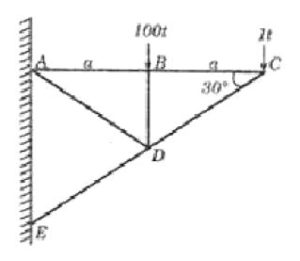
Options:
1) Joint C
2) Joint B
3) Joint D
4) Joint A
Answer: Joint D
Q 94: The force in CD of the truss shown in the figure
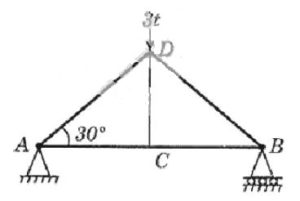
Options:
1) 3t compression
2) 3t tension
3) Zero
4) 1.5t compression
Answer: Zero
Q 95: A shaft rotating N.R.M. under a torque T, transmits a power of
Options:
1) TπN/30 Newton meters/sec
2) TπN/30 Newton meters/min
3) TπN/60 Newton meters/min
4) TπN/60 Newton meters/sec
Answer: TπN/30 Newton meters/sec
Q 96: The greatest load which a spring can carry without getting permanently distorted is called
Options:
1) Stiffness
2) Proof resilience
3) Proof stress
4) Proof load
Answer: Proof load
Q 97: In case of a simply supported I – section beam of span L and loaded with a central load W, the length of elasto-plastic zone of the plastic hinge is
Options:
1) L/2
2) L/3
3) L/4
4) L/5
Answer: L/5
Q 98: The horizontal thrust on the ends of a two-hinged semicircular arch of radius R carrying
Options:
1) A Uniformly distributed load w per unit run over its right half span is (2/3)*(wR/π)
2) A uniformly distributed load w per unit run over its entire span is (4/3)*(wR/π)
3) A distributed load varying from zero at the left end to w per unit horizontal run at the right end, is (2/3)*(wR/π)
4) All option are correct
Answer: All option are correct
Q 99: If a three-hinged parabolic arch, (span I, rise h) is carrying a uniformly distributed load w/unit length over the entire span,
Options:
1) Horizontal thrust is (wl2)/8h
2) Shear Force will be zero throughout
3) Bending Moment will be zero throughout
4) All option are correct
Answer: All option are correct
Q 100: The equivalent length of a column of length L having both the end fixed is
Options:
1) 2L
2) L
3) L/2
4) L/√2
Answer: L/2
